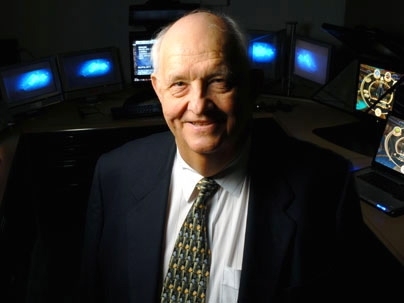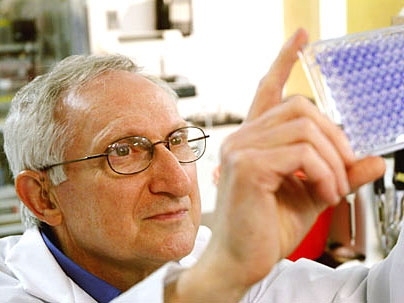The Lemelson-MIT Program announced today that its $500,000 prize -- the largest cash prize given in the United States for invention -- will be presented to James Fergason, whose work with liquid crystals paved the way for multiple innovations, including digital watches and computer monitors.
The $100,000 Lemelson-MIT Lifetime Achievement Award will go to Dr. Sidney Pestka, chair of the Department of Molecular Genetics, Microbiology and Immunology at the University of Medicine and Dentistry of New Jersey Robert Wood Johnson Medical School, for his seminal work on interferons.
In 1958, Fergason started his work at Westinghouse Research Laboratories, where he began experimenting with liquid crystals. Although he neither discovered liquid crystals nor was the first to experiment with them, he said he was "the first guy who saw what they were really good for."
Now Fergason holds more than 130 U.S. patents and more than 500 foreign patents. His work paved the way for digital watches, mood rings and computer monitors, among other things.
"James Fergason's inventions are directly responsible for the creation of a multibillion-dollar liquid crystal display industry that employs millions of people around the world," said Merton Flemings, director of the Lemelson-MIT Program, which gives the annual award.
"But those are not his only contributions to society," Flemings said. "He is also a staunch advocate for independent inventors and has dedicated countless hours to this cause. We recognize his outstanding achievements in the awarding of this year's $500,000 Lemelson-MIT Prize."
In 2001, Fergason founded Fergason Patent Properties. The company is currently developing three new liquid crystal display (LCD)-based technologies.
In addition to his impact on today's consumer electronics industry, Fergason also champions the interests of independent inventors.
The secretary of commerce appointed Fergason to the first Patent Public Advisory Committee in 2000. He advised the U.S. Patent and Trademark Office on policy and operational issues, and he helped develop a quality improvement program that is still in effect today.
Meanwhile, Pestka's work led to groundbreaking treatments for chronic hepatitis B and C, multiple sclerosis and some cancers.
"Dr. Pestka's interferon discoveries and subsequent inventions have made a profound impact on medicine and health care," said Flemings. "His work has opened doors to new treatments for millions of people who suffer from devastating diseases and it has fueled the multibillion-dollar biotherapeutics market."
Dr. Harold L. Paz, former dean of Robert Wood Johnson Medical School in Piscataway, N.J., considers Pestka's work to be "a critical catalyst in the development of the biotechnology industry."
Both Fergason and Pestka will receive their awards today during a private ceremony at the Museum of Contemporary Art in Chicago.
A version of this article appeared in MIT Tech Talk on May 3, 2006 (download PDF).







